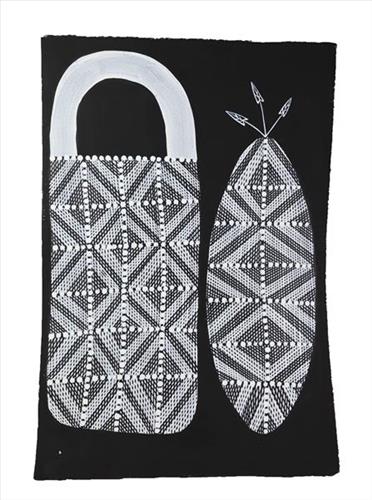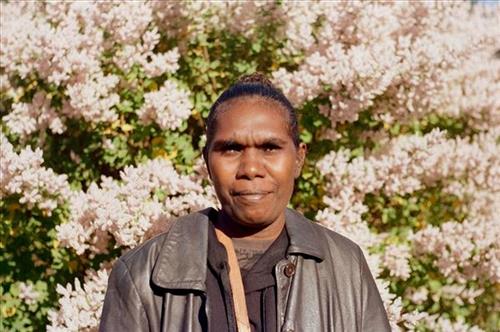377813282212435
Dillybag
The dilly bag was traditionally used as a woven collecting basket. These baskets or bags made from varied natural materials, such as sand palm, pandanus or vine were and sometimes are, used to collect a variety of foods such as fish caught in conical fish traps, collections of yams or various other bush foods.
The tightly woven surface painted with natural pigments, again imparting a ceremonial association. Woven and dyed dilly bags were commonly used for hunting and the containment of personal possessions, whereas painted bags are more commonly the domain of ceremony. These bags, however, have a break in the painted bands towards the back end of the bag, (as often woven ridges of more sculpted bags are also broken at the back) to allow a smooth surface which is the area in contact with the wearer’s body.
On some dilly bags, a close weave can be indicative of honey-collecting bags made for harvesting native sugar bag or wild/bush honey. In addition to a tight weave, the embedding of wax into the base ensures a ‘fluid-tight’ vessel.
The creation story in Kakadu and West Arnhem centres on a female ancestor, the mother known as Yingarna, who emerged from the Arafura Sea and travelled across the inland regions. Yingarna gave birth to bininj (aboriginal people), the people of this country, and taught them their language. Suspended from a headband were many dilly bags all with different stories, people and food, one of which that contained yams, which she planted and taught bininj how to harvest.
As well as being of practical use, dilly bags are also of spiritual significance to Arnhem Land people. Dilly bags are said to be totemic objects and are associated with particular sites in the landscape.




